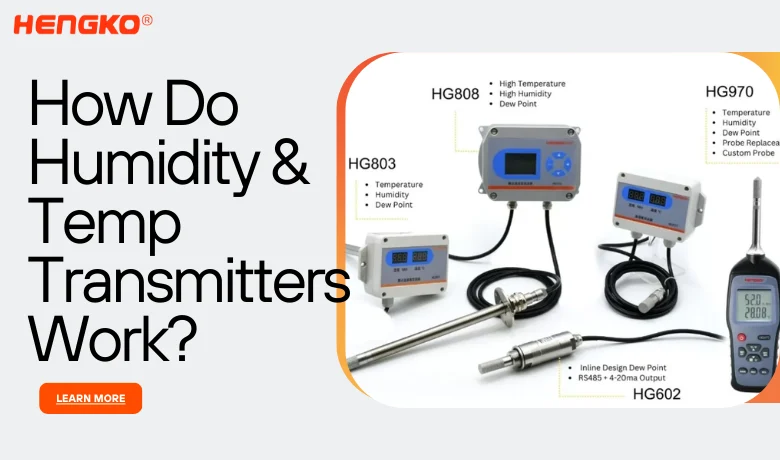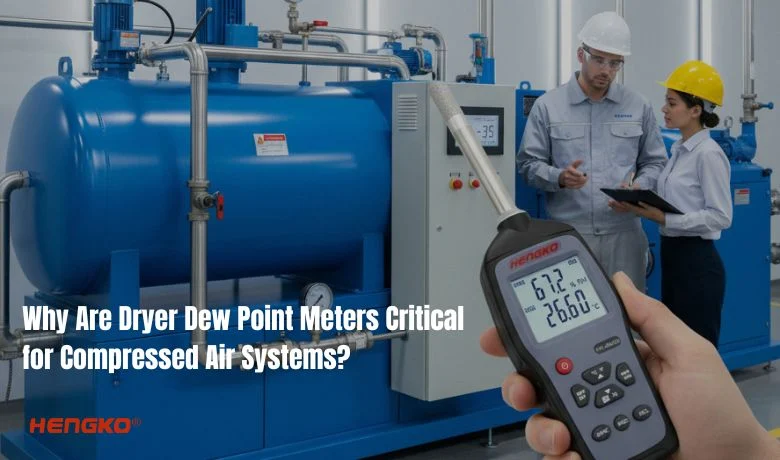1. Introduction
The semiconductor industry operates under some of the most stringent environmental conditions of any manufacturing sector. As devices shrink to the nanoscale and production processes grow increasingly complex, maintaining precise control over environmental parameters—particularly temperature and humidity—has become critical to ensuring consistent quality and yield.
Even slight fluctuations in temperature or humidity can impact process stability, leading to variations in photolithography alignment, etching precision, and material deposition. These, in turn, affect product reliability, production throughput, and long-term device performance.
Given these challenges, real-time temperature and humidity monitoring is not just a best practice—it’s a fundamental requirement. Robust environmental monitoring helps maintain process integrity, reduce downtime, and ensure compliance with industry standards and cleanroom classifications.
2. Why Temperature and Humidity Matter in Semiconductor Manufacturing
-
Humidity & Electrostatic Discharge :
Low humidity increases the risk of static electricity buildup, leading to ESD events that can instantly destroy delicate IC components. -
Temperature-Sensitive Processes:
Advanced lithography, thin-film deposition, etching, and curing processes require extremely tight temperature control. Even a ±0.2°C deviation can lead to shifts in critical dimensions or alignment errors. -
Contamination from Particles & Moisture:
Humidity promotes condensation, which can introduce micro-droplets or facilitate chemical reactions on wafer surfaces. Similarly, poor temperature control may cause thermal expansion mismatches, affecting layer adhesion or device geometry.
3. Key Application Areas Requiring Environmental Monitoring
In semiconductor manufacturing, environmental monitoring isn’t isolated to just one part of the process—it spans the entire production chain. Let’s break down the key areas where temperature and humidity monitoring are absolutely critical:
● Cleanrooms
Cleanrooms are the backbone of semiconductor production. To maintain ISO Class 5–7 environments, strict control of temperature and humidity is essential to minimize particle generation, prevent condensation, and reduce static electricity. A slight fluctuation in humidity can elevate ESD risks or encourage contamination.
Typical range:
Temperature: 21–23°C (±0.1°C)
Humidity: 40–60%RH (±1%RH, sometimes tighter)
● Wafer Fabrication
Processes like photolithography, oxidation, etching, and chemical vapor deposition (CVD) are extremely sensitive to environmental drift. Temperature fluctuations can shift critical dimensions, alter etch rates, or affect photoresist performance. Stable conditions ensure tight process windows are consistently met.
Impact:
Temperature drift = CD (critical dimension) shift
Humidity instability = chemical inconsistency in process gases
● Packaging & Testing
Moisture is a silent threat during IC packaging. If left uncontrolled, it can cause delamination, corrosion, and even "popcorn" cracking during reflow soldering. Similarly, sensitive testing equipment and optical inspection systems also demand tightly regulated conditions to maintain precision.
Applications affected:
BGA, QFN packaging
IC burn-in testing
Automated optical inspection (AOI)
● Storage & Transport
Semiconductor products are vulnerable even after production. Exposure to moisture or oxidation during storage or logistics can lead to latent failures, yield loss, or shortened shelf life. Controlled warehouses and packaging materials (e.g. dry packs, nitrogen cabinets) must work in tandem with accurate environmental monitoring systems.
Goals:
Prevent moisture absorption in hygroscopic materials
Ensure temperature remains within safe ranges during transit
4. Technical Requirements for Monitoring Systems in Semiconductor Environments
To meet the extreme demands of semiconductor manufacturing, temperature and humidity monitoring systems must deliver exceptional precision, reliability, and integration capabilities. Below are the key technical requirements to consider when selecting or designing monitoring solutions:
High Accuracy
Semiconductor processes often operate within narrow environmental tolerances, where even a ±0.5°C deviation could cause process drift. Monitoring equipment must provide:
-Temperature accuracy: ±0.1°C or better
-Humidity accuracy: ±1%RH or better
This level of precision is critical for ensuring process repeatability, yield optimization, and compliance with ISO cleanroom standards.
Long-Term Stability & Fast Response
Stability over time minimizes the need for frequent recalibration—a crucial factor in high-volume fabs where downtime is costly.
-Drift-resistant sensors ensure measurement consistency over months or years.
-Fast response times (typically within seconds) allow immediate detection of environmental changes, helping prevent process excursions.
Resistance to Interference and Harsh Conditions
Monitoring devices must operate reliably in environments with potential exposure to:
-EMI (electromagnetic interference) from heavy equipment
-Chemicals or corrosive vapors (e.g., acids, solvents)
-High airflow or particulate stress in cleanroom zones
Robust enclosures, shielded electronics, and corrosion-resistant probes (e.g., stainless steel or coated materials) are essential.
Communication & System Integration
Modern fabs rely on integrated data systems to control and trace every process step. Therefore, sensors and transmitters must support:
-Multiple protocols: Modbus RTU/TCP, RS485, Ethernet, 4-20 mA
-Easy integration with Building Management Systems (BMS), SCADA, or Manufacturing Execution Systems (MES)
-Optional support for remote configuration and diagnostics to enhance maintainability
Data Logging and Alarm Functions
Real-time alerts and historical records help detect anomalies early and provide traceability for quality control. Essential features include:
-Internal memory or external storage for data logging
-Threshold alarms for out-of-spec conditions (e.g., via relay or digital output)
-Cloud/data platform support (optional) for centralized monitoring across facilities
5. Recommended Monitoring Solutions and Product Features
When it comes to high-precision environmental monitoring in semiconductor manufacturing, not all transmitters are created equal. Cleanroom environments and process chambers demand sensors that are not only accurate, but also durable, stable, and easy to integrate.
✅ Recommended Solution:
HENGKO HG808-C Stable Industrial Temperature & Humidity Transmitter
The HG808-C series from HENGKO is purpose-built for industrial applications requiring high accuracy and long-term reliability—making it an ideal choice for cleanrooms, wafer fabs, and packaging/testing areas in semiconductor production.
Key Features at a Glance:
● Wide Temperature Range:
Measures from -50°C to 150°C (-40°F to 302°F), suitable for high-temperature environments such as ovens, cleanroom ducts, or process equipment zones.
● High-Performance Probe:
Equipped with a durable, waterproof, and fine dust–resistant probe, designed to withstand demanding industrial conditions without compromising accuracy.
● Dew Point Measurement:
In addition to temperature and humidity, the HG808 calculates and transmits dew point values, a critical factor in preventing condensation-related failures during chip packaging and storage.
● Flexible Output Options:
Designed for seamless integration with factory systems:
RS485 Modbus (digital signal)
4–20 mA (analog)
Optional: 0–5 V / 0–10 V outputs
● Integrated Display:
Built-in screen allows for on-site, real-time readings of temperature, humidity, and dew point—ideal for manual inspection points in cleanroom facilities.
● System Compatibility:
Easily connects to a wide range of industrial control platforms:
Digital display meters
PLCs (Programmable Logic Controllers)
Industrial control systems / SCADA
Frequency converters and more
Installation Options:
The HG808-C series offers flexible installation methods to suit various monitoring scenarios:
Wall-mounted for cleanroom ambient monitoring
Duct-mounted for air handling units (AHUs)
Embedded modular design for integration into OEM systems or testing chambers
6.Conclusion
Maintaining environmental stability is no longer optional—it’s a competitive necessity in semiconductor manufacturing. With the HG808-C, engineers gain the accuracy, durability, and integration needed to meet strict process demands. For more information or integration guidance, contact our application specialists
today.






